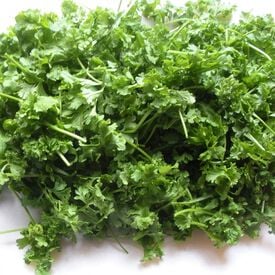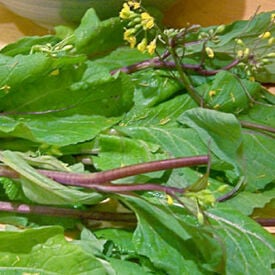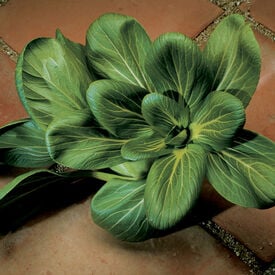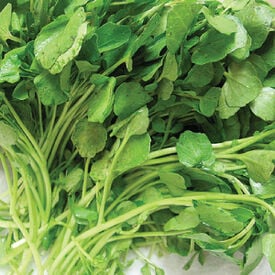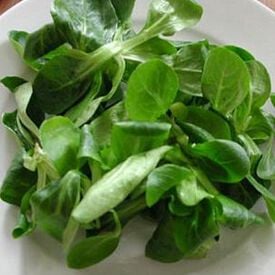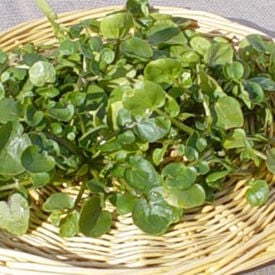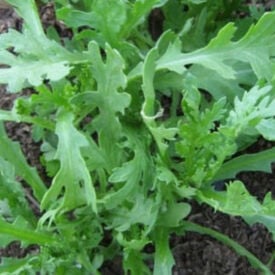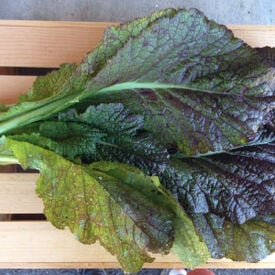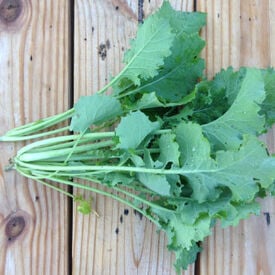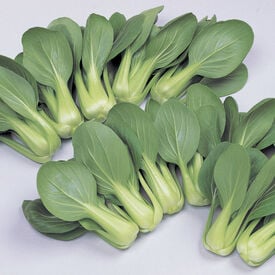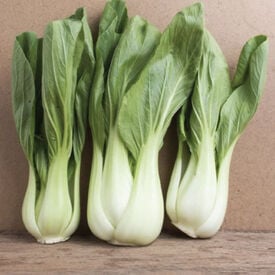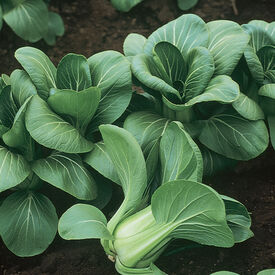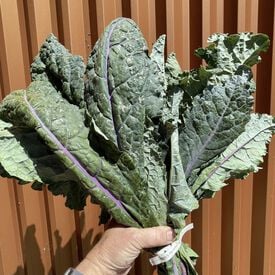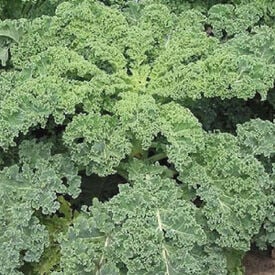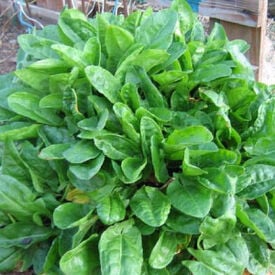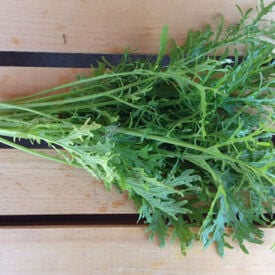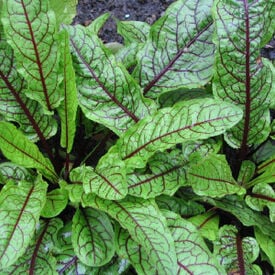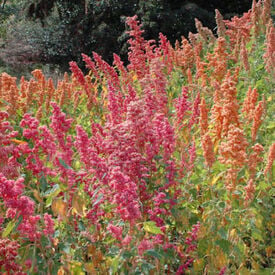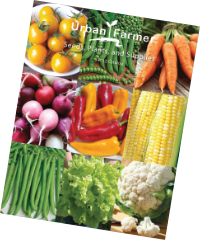The Curled Cress is a highly nutritious aquatic green. This cress has been cultivated for hundreds of years. This peppery and pungent cress has the same tangy flavor as watercress, as they are of the same botanical family. Curled cress is great for seed sprouting or microgreen growing!
The Hon Tsai Tai has deep purple tender stalks with a slight mustard flavor that is great in different salads or cooked into stir fries! Its green leaves have petite florets that are best harvested right before the bright yellow blossoms open. Hon Tsa Tai is best grown in mid to late summer.
Feng Qing Choi cabbage is a slow bolting Mei Qing Choi type with good plant size and dark leaf color. This variety has excellent holding ability and uniformity.
The Upland Cress is a highly nutritious aquatic herb. This cress is a slow to bolt green, but once it's established it will take off and have a long growing season! Upland's 6-8" rosettes of dark green, glossy, rounded leaves are very tasty and refreshing. Upland is very similar to watercress, but is much easier to grow!
The Vit Mache, or also known as Lamb's Lettuce, is a green that is excellent for gourmet salads or as a garnish. Vit Mache produces good yields of 3" salad leaves. This green has a mild taste and is usually mixed together with Endive, Mustard, and Arugula. Vit Mache will produce a fall/winter harvest. Sow every 2 weeks.
True Watercress is a delicious highly nutritious aquatic herb. This watercress has a wonderful fresh peppery-tasting flavor. Being semiaquatic, this cress is a creeping perennial whose leaves are popular in salads, sandwiches and as a garnish. True Watercress grow rapidly in in damp soil and can be grown in pots of soil placed in a tub of water if water is changed weekly.
Garland Serrate Leaf Greens is a delicious Japanese green that is an edible chrysanthemum. This popular Japanese green has serrated, dark green aromatic leaves that have an excellent flavor that becomes stronger with age. Garland Serrate is easy to grow and produces high yields with side shoots.
The Red Giant is a large mustard with an excellent, pungent flavor. This variety is a large purple-red leaf type. The Red Giant is great used as an ornamental or salad garnish. This variety's flavor has a slight hint of wasabi and grey poupon.
The Dwarf Siberian Kale leaves are perfect as a garnish and in hearty winter dishes. This frilly green and purple kale dances in the crisp early morning cold and thrive. Why? Because its roots are from Russia!
Li Ren Choi cabbage is good looking mini pak choi with light green stems and slightly darker green leaves. This variety develops a pak choi shape at a very early stage. It can even be planted in trays and harvested at transplanting time. It is one of the smaller mini pak choies on the market. Excellent production for pak choi hearts.
The White Stem cabbage or Bok Choy is a great tasting cabbage that is enjoyed cooked or raw. Bok Choy is a Chinese white cabbage. Bok Choy is grown for its stalks which are used in different oriental dishes. Can be grown as a spring and/or fall crop.
Mei Qing Choi cabbage is a Shanghai pak choi type with good heat and cold tolerance and bolting resistance. In the U.S., this variety is harvested as baby pak choi. It is smaller than Joi Choi, weighing about a quarter of a pound. This pak choi has an excellent flavor and is extra tender.
The Dazzling Blue Kale is a beautiful, cold-tolerant lacinato-type that produces large blue-green leaves with deep purple veins. This kale is sure to add a delicious pop of color to any salad! This variety will survive freezing temperatures better than other lacinato types and will even intensify with cool temperatures.
The Blue Curled Scotch Kale can be used as a garnish and or in hearty winter dishes. This kale variety is a compact plant with very tender, blue-green, crinkled leaves that are quite delicious, very cold hardy, and rich in vitamin A.
The Garden Sorrel has delicious lemon flavored leaves that go great with a zesty salad or savory soup! These greens are best harvested in early spring and late fall when it's most tender. Garden Sorrel has pointed leaves that form thick clumps. The Garden Sorrel is popular for being high in Vitamin C.
The Green Frills Mustard is a vibrantly frilly green with deep cuts. With an upright growth habit, this variety's leaves are a bright green with a delicious, crisp peppery taste. Green Frills Mustard is great at resisting bolting!
The Red Veined Sorrel is a delicate green with an excellent flavor! This Red Veined Sorrel is a fast growing green that adds a delicious flavor and texture to salads. This green's leaves are best young with a sharp tart flavor that is unique to this plant. The central vein is a dark maroon that webs out throughout the leaf. This variety has very showy leaves that is great for salads, soups, stews and more.
The Brilliant Rainbow Quinoa blends beautifully into meals or salads. Just like its name, this quinoa contains a spectrum of many different colored heads - red, orange, gold, white, and green. The Brilliant Rainbow Quinoa's leaves have a salty spinach-like flavor. Harvest for greens when 6-8" tall or let grow for beautiful tall blooms that can be harvested for grain. This Quinoa's grain has a nutty flavor that goes well with any dish!
